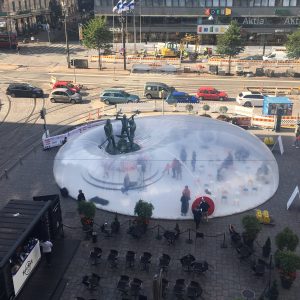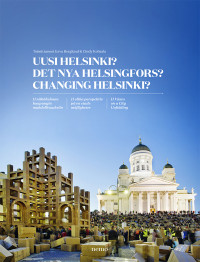Helsinki’s islands in literature are the subject today of a public lecture (in Finnish) in the studia generalia series on islands in Finnish literature at the University of Tampere.
I will present on the basis of a forthcoming article, written together with Sarianna Kankkunen, which examines Helsinki’s archipelago as a heterotopian space.
From the introduction:
“The islands of Helsinki appear in literature repeatedly as a space that questions the order of the capital – and of society at large -, and that present it with a reverse image. In literary depictions and the experiences of literary characters, the otherness of islands is emphasized, as is their transformative power. The urban islands are also the arenas for identity transformations – spaces, where characters undergo a spiritual or mental awakening. The dynamics between the city and the islands along its shores depict the fundamental tensions between community and individual, between the self and the world.” (Ameel & Kankkunen 2017; forthcoming)
(translated free from Finnish)
—
“Pääkaupungin saaristo on ollut esillä kirjallisuudessa 1800-luvun historiallisista romaaneista ja vaikkapa Zachris Topeliuksen pakinoista aina 2000-luvun romaanitaiteeseen. Helsingin saaret näyttäytyvät kirjallisuudessa toistuvasti tiloina, jotka kyseenalaistavat pääkaupungin – ja sitä kautta yhteiskunnan – järjestystä ja tarjoavat sille käänteisen kuvan. Kirjallisissa kuvauksissa ja romaanihenkilöiden kokemuksissa korostuu saarien toiseus ja niissä piilevä muutosvoima. Saaret ovat myös minuuden muodonmuutoksen näyttämöitä – tiloja, joissa henkilöt käyvät läpi henkisen herätyksen. Kaupungin ja sen edustalla sijaitsevan saaren välinen voimakenttä kuvastaa jännitettä yhteisön ja yksilön, minuuden ja muun maailman välillä.” (Ameel & Kankkunen 2017; tulossa)
Ameel, Lieven & Kankkunen, Sarianna 2017 (forthcoming): “Saaristo kaupungissa – Helsingin saaret kirjallisuudessa.” (“Archipelago in the city – Helsinki’s islands in literature”) In Lahtinen, Toni, Sagulin, Merja & Laakso, Maria (eds.): Suomalaisen kirjallisuuden saaret (“Islands in Finnish Literature”). Helsinki: SKS.


